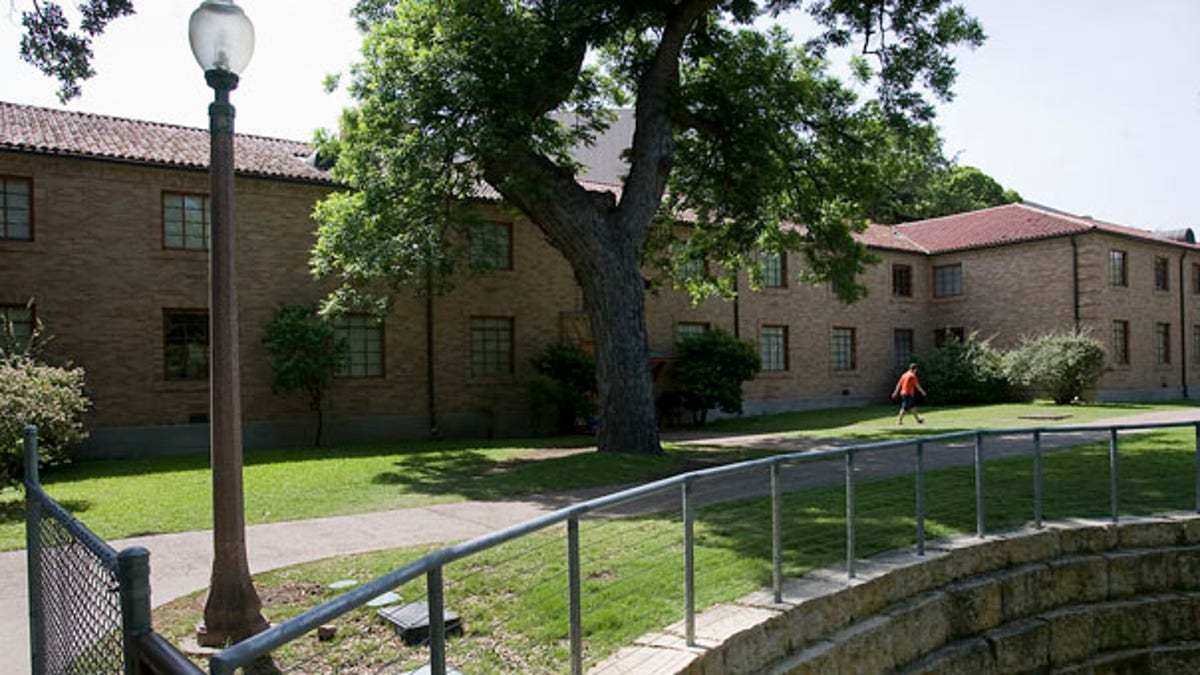
May 18: Simkins Hall, a University of Texas dormitory, has been renamed Creekside Hall to scrub the name of a former professor who was a Ku Klux Klan organizer. (Austin American-Statesman)
University of Texas regents voted unanimously to rename a dormitory that honored a Ku Klux Klan organizer who taught at the school 100 years ago.
Simkins Hall, a two-story brick dorm built in the 1950s, has been renamed Creekside Residence Hall in order to scrub the name of William Simkins, a popular law school professor in the early 20th century -- and a man with a dubious past.
Simkins served as a Confederate officer and early organizer of the Ku Klux Klan in Florida, promoting the Klan and bragging about efforts to terrorize and harass "darkey" in campus speeches and publications.
UT President William Powers Jr. asked the regents to mend the school's legacy -- a move that came after weeks of deliberations by a 21-member advisory panel and two public hearings.
"An institution like ours is shaped by its history, but it need not be encumbered by it," Powers said before the vote.
Keeping Simkins' name on the building "compromises public trust and the university's reputation," said Gregory Vincent, Texas vice president for diversity and engagement.
"By his own admission, Simkins engaged in violent behavior against African Americans. These were actions taken outside of the law," Vincent said.
The issue sparked in May after former Texas law professor Tom Russell published an online article detailing resistance by the university to integration in the 1950s and 1960s. Texas named the dorm after Simkins in 1954, the same year the U.S. Supreme Court's Brown vs. Board of Education decision ended legal segregation.
"I support 100 percent taking the name off," said Russell, who now teaches law at the University of Denver. "My goal in writing this paper was to help start a conversation about race and history and law. I will say in regard to that, I've succeeded beyond my wildest dreams."
Simkins was a Confederate colonel in the Civil War and organized the Klan in the Florida soon after the war ended. After moving to Texas, he began teaching law at the university in 1899 and stayed there until his death in 1929. With wavy white locks and a fondness for chewing tobacco, he was a popular figure on campus and his portrait still hangs in the law school.
In a campus speech in 1914 and an article two years later in the alumni magazine, Simkins said he never drew blood as a Klansman. He did, however, admit to assaulting a black man, participating in a train robbery and sowing fear in Florida's "black belt" as a masked night rider.
When a white woman in Florida complained of being insulted by a black man, Simkins wrote, "I seized a barrel stave lying near the hotel door and whipped that darkey down the street."
Russell said he took his concern to Texas officials when he was still teaching in Austin in the 1990s but was told not to worry about it because the dorm, now considered one of the less-desirable residences on campus, would soon be torn down.
Closed for the summer for repairs, the dorm has room for 190 students.
Brittany McCoy, a 20-year-old African-American student from Dallas, said it was time to remove Simkins' name from a place where black students may live.
"I was shocked," to learn of Simkins' connection to the KKK, McCoy said. "Texas is a school that stresses diversity. I know I wouldn't want to stay in that dorm, and wouldn't want my people staying there."
Not everyone thought Simkins' name needed to come off.
Dave Player, associate editor for the Daily Texan student newspaper, wrote last month that the dorm was named after Simkins because of his 30 years teaching law, not because he was a racist.
The school could acknowledge Simkins' past while keeping his name on the building, Player wrote.
"Honoring an individual by putting his or her name on a facility does not mean the University is condoning every aspect of that individual's character," Player wrote. "(If) a perfect character record is a requisite for honoring an individual then our campus would likely be composed of nameless buildings."
Click here for more on this story from the Austin American Statesman.
The Associated Press contributed to this report.

